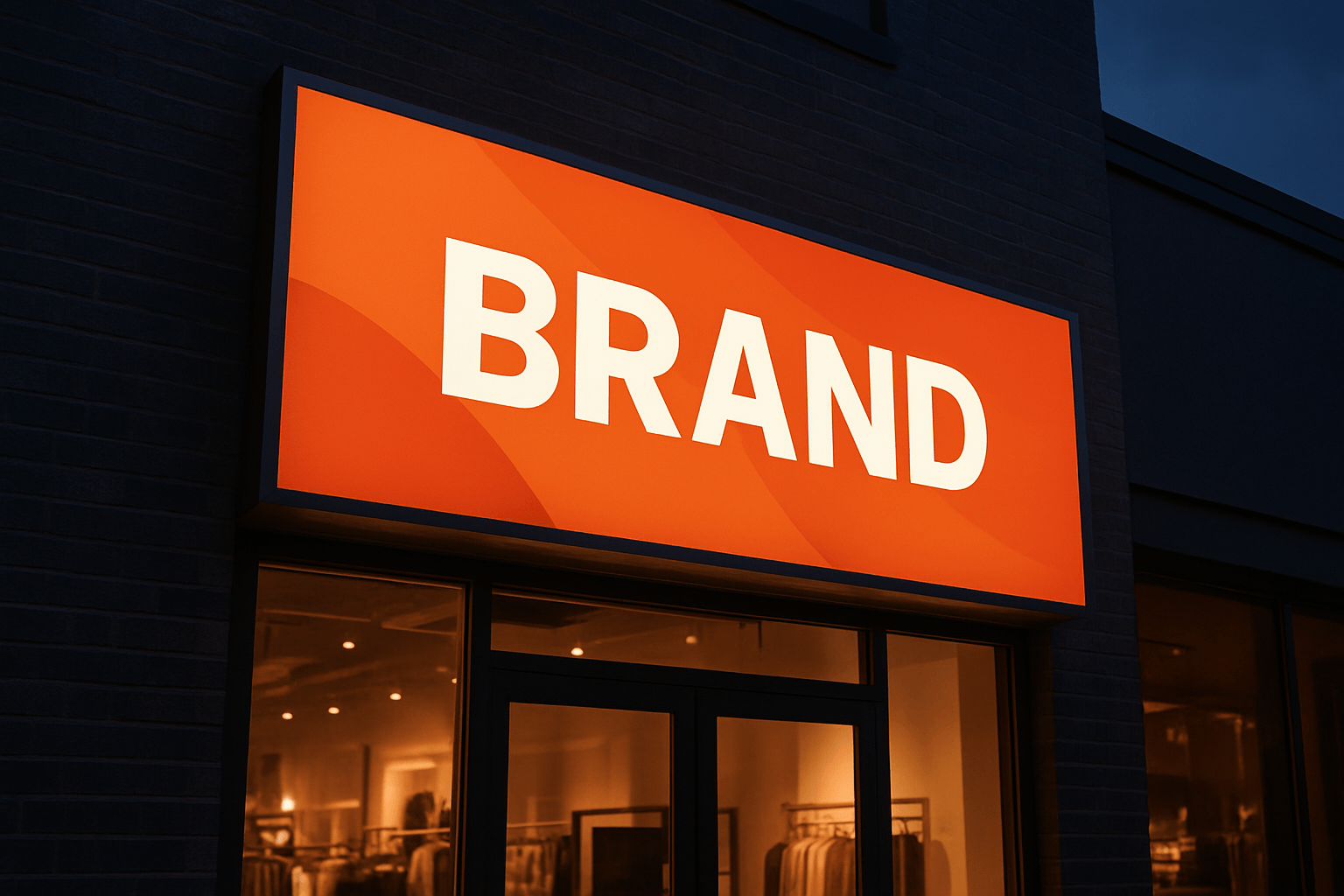Introduction
Flex face signs have become one of the most popular solutions for large-format business signage. Unlike traditional rigid signs, they use a flexible PVC banner stretched tightly over a frame, offering a seamless, modern look that works well for both indoor and outdoor branding. Their ability to cover large spaces without visible joints, combined with durability and cost-effectiveness, makes them a go-to option for retailers, industrial sites, and event organizers.
This guide explores what flex face signs are, their benefits, design possibilities, installation process, costs, and why they remain a preferred signage choice for businesses of all sizes.
What Is a Flex Face Sign?
A flex face sign is a signage system that replaces rigid materials with a flexible PVC skin. The banner is stretched across a lightweight aluminum or steel frame, secured with a locking system that keeps the surface smooth and wrinkle-free.
Because of their structure, these signs are highly adaptable. They can be designed in oversized dimensions without seams, making them ideal for large-scale branding. Businesses often choose them for retail storefronts, petrol stations, shopping centers, and industrial units where visibility and durability are crucial.
The flexibility of the material also allows for digital printing, meaning vibrant graphics, logos, and backlit illumination can be incorporated easily. With the addition of LED lighting, flex face signs offer excellent visibility both day and night.
Benefits of Flex Face Signs
Flex face signage offers businesses a range of practical and financial advantages:
- Large format capabilities: Seamless coverage for oversized signs.
- Durability: Weatherproof, UV-resistant, and built to last outdoors.
- Cost-effectiveness: More affordable than rigid alternatives for large displays.
- Easy to update: Graphics can be replaced without changing the frame.
- Illumination options: Backlit signs ensure 24/7 visibility.
- Lightweight structure: Simplifies installation and reduces transport costs.
For example, a retail chain may choose flex face signs for its branches because the system allows standardized frames while changing only the printed PVC when rebranding. This not only reduces costs but also ensures consistent branding across locations.
Common Applications
Flex face signs are versatile and appear across multiple industries:
- Retail and Shopping Centers: Storefront branding and promotions.
- Industrial Sites and Warehouses: Large-scale identification signs.
- Petrol Stations: Illuminated canopy and price board signage.
- Event Branding: Temporary but durable promotional displays.
- Outdoor Advertising: Billboards and roadside displays.
These signs balance affordability and scale, which is why businesses with high visibility needs frequently rely on them.
Design and Printing Options
Flex face signs are highly customizable. Businesses can select:
- Full-color digital printing: Allows for high-resolution logos, branding, and visuals.
- Backlit graphics: Uses LED illumination for vibrant nighttime display.
- Custom shapes and oversized formats: Suitable for unique brand requirements.
- Non-illuminated versions: A simpler, budget-friendly choice for indoor use.
Printing is done on durable PVC using weather-resistant inks, ensuring color consistency even under sunlight and rain. Companies often work with professional designers to create layouts that maximize visibility from long distances.
Installation Process
Installing a flex face sign involves:
- Constructing a steel or aluminum frame.
- Stretching and tensioning the PVC skin over the structure.
- Locking the edges into place for a smooth finish.
This process ensures a wrinkle-free surface and durability against wind and weather. Larger signs may require specialist equipment and installation teams, while smaller signs can be mounted with standard tools.
Maintenance and Lifespan
Flex face signs are low-maintenance compared to traditional signage. The PVC surface only requires occasional cleaning with mild detergent to remove dirt or dust. With UV-stable inks, the graphics maintain vibrancy for years.
On average, flex face signs last between 5–7 years outdoors, depending on climate and exposure. Frames typically last much longer, meaning only the printed skin needs replacement. This replacement flexibility is one of the main reasons businesses choose this system.
Cost Factors
The price of a flex face sign varies depending on:
- Size of the sign
- Illumination options (non-lit vs. backlit)
- Frame material and build quality
- Design complexity and print resolution
- Installation requirements
As a guideline, non-illuminated signs are the most affordable, while large illuminated displays require higher investment. However, the long lifespan and ease of updating graphics make them cost-efficient over time.
FAQs
1. What makes a flex face sign different from standard signs?
It uses a flexible PVC skin instead of rigid panels, allowing seamless oversized displays.
2. Can flex face signs be illuminated?
Yes, LED backlighting can be added for 24/7 visibility.
3. How long do they last outdoors?
Typically 5–7 years, depending on exposure and maintenance.
4. Are they suitable for small businesses?
Yes, they’re affordable and scalable, making them ideal for both small and large companies.
5. How easy is it to replace graphics?
Very easy — only the PVC skin is changed, not the frame.
6. Do they withstand harsh weather?
Yes, they are UV-stable, waterproof, and designed for outdoor durability.
7. Can flex face signs be customized?
Absolutely, from custom sizes and shapes to illumination options.
